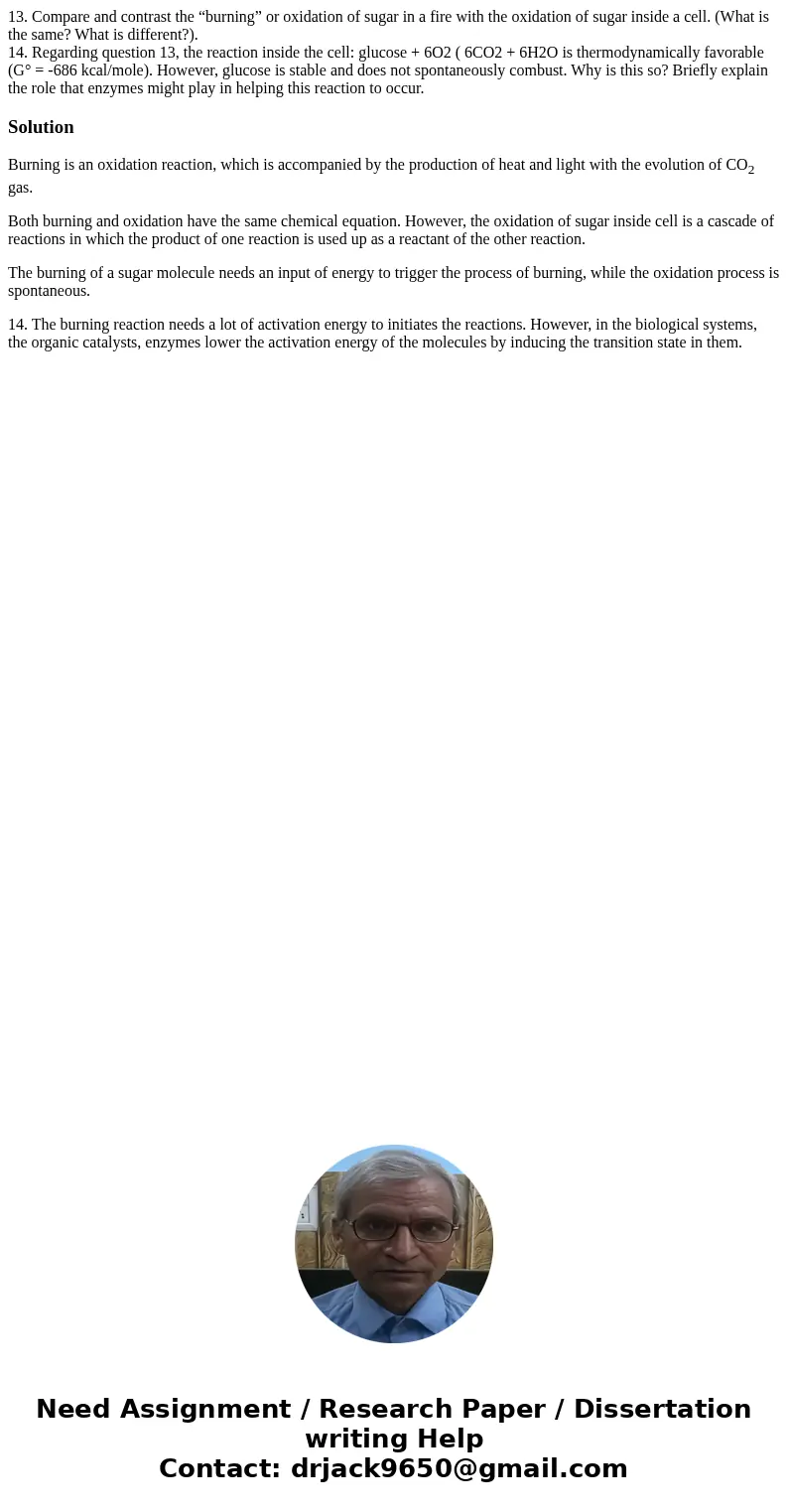13 Compare and contrast the burning or oxidation of sugar in
13. Compare and contrast the “burning” or oxidation of sugar in a fire with the oxidation of sugar inside a cell. (What is the same? What is different?).
14. Regarding question 13, the reaction inside the cell: glucose + 6O2 ( 6CO2 + 6H2O is thermodynamically favorable (G° = -686 kcal/mole). However, glucose is stable and does not spontaneously combust. Why is this so? Briefly explain the role that enzymes might play in helping this reaction to occur.
Solution
Burning is an oxidation reaction, which is accompanied by the production of heat and light with the evolution of CO2 gas.
Both burning and oxidation have the same chemical equation. However, the oxidation of sugar inside cell is a cascade of reactions in which the product of one reaction is used up as a reactant of the other reaction.
The burning of a sugar molecule needs an input of energy to trigger the process of burning, while the oxidation process is spontaneous.
14. The burning reaction needs a lot of activation energy to initiates the reactions. However, in the biological systems, the organic catalysts, enzymes lower the activation energy of the molecules by inducing the transition state in them.

 Homework Sourse
Homework Sourse